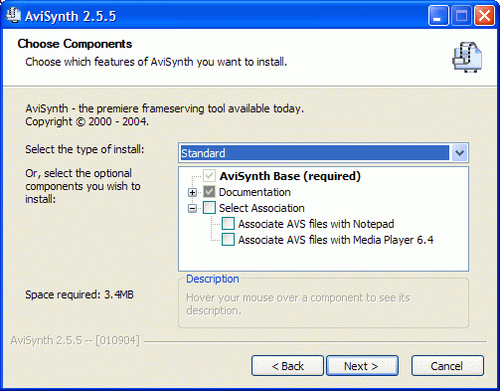
If that is still true, you’re converting from YUV->YV12->RGB->YUV for no reason (if you’re solely using VirtualDub for rendering purposes only). Also, I am not sure if this has been updated in VirtualDub2 but the last I knew, VirtualDub requires a RGB colorspace.

Prores uses the YUV colorspace so you’re basically converting twice for no reason, which could cause some minor degradation of your video (although it is probably mostly unnoticeable). If you’re not using any filters that require the YV12 colorspace (qtgmc no longer needs it), and you’re converting to prores, my understanding is that the conversion to YV12 is unnecessary. One thing that I wanted to point out / ask you about is your colorspace conversion in your boilerplate avs script. I found the original immensely helpful in getting myself set up and I don’t think there’s anything else like this on the internet. Hi Andrew, thanks again for these tutorials. It has a ton of additional features listed on the wiki page, which you can play around with if the defaults don't work for you. For example, to use just the top part of the frame, you would do: If you want to frame a different part of the image (like the top or bottom versus the middle), then just adjust the crop numbers accordingly by adding what you subtract from one number to the other, or vice versa.
#Avisynth crop free#
Technically, 720x405 is true 16x9, but the chroma subsampling options supported by QTGMC don't like odd numbers, so 720x404 is the closest you can get.Īlso, this may crop off more than you want, so feel free to play around with the settings. The above settings will give you as close to a 16x9 frame as you can get out of this resolution. Don't ask me why AVISynth does this, it just does. Note that the numbers in the crop command refer to left,top,right,bottom respectively, and the right and bottom numbers are negative, while the left and top numbers are positive. Here's what to add if you want to upscale SD to HD with a center crop: Optional - Cropping and resizing to HD resolutions Don't ask me why you have to do this, I agree that it seems pointlessly tedious. Place the files "libfftw3f-3.dll" and "FFTW3.dll" in the SysWow64 folder. Make a copy of it and rename it as "FFTW3.dll". Now, open the fftw-3*.dll archive, then (as noted on the QTGMC page) extract the libfftw3f-3.dll file. CPU-Z or AVISynth Info Tool can tell you this if you're not sure. If there's a choice between AVX, AVX2 and a version without AVX, you'll need to know what instruction sets your processor supports.

avsi files to the plugins directory (if given a choice) from all plugins EXCEPT the fftw-3*.dll archive.
#Avisynth crop install#
For example, the default install creates a plugin folder at:Ĭ:\Program Files(x86)\AVISynth+\plugins64+\Įxtract all "圆4" versions of the. Then, go to the plugins64+ directory for AVISynth+. Otherwise, you can stick with the defaults. Also, I highly recommend checking the "Add AVISynth Script to New items menu" option. I recommend installing into whatever your user folder is (for example C:\Users\Me\) rather than the default of Program Files(x86) so you don't have to deal with authentication requests every time you add a plugin.


 0 kommentar(er)
0 kommentar(er)
